

When was the last time that you’ve talked to a salesperson to start using a software product?
Unless you spoke on behalf of an enterprise, I believe the chances are that you haven’t been talking to salespeople for a while now.
The product-led mindset has started to be adopted by many companies, and some of the companies that have adopted a product-led growth strategy are performing much better. Of course, many of the practices of product-led growth strategy are nothing new, but still, the fact that PLG is now being adopted as a mindset is what is changing the game.
When you think that the product-led approach is spreading rapidly after COVID-19, you realize that the product-led approach is definitely something to look at.
Although the product-led mindset is taking over in many different industries, in this article, I will focus more on what PLG SaaS is.
I believe PLG in SaaS can be a great convenience for many SaaS products that are out there and bring true success to businesses.
Throughout the article, I will elaborate on why it can be much better for SaaS products and how you can achieve becoming product-led in the best way possible.
Let’s get into it!
What exactly is Product-Led Growth?

Product-led growth (PLG) is not only a business methodology but also a mindset. Product-led companies build their abilities of user acquisition, expansion, conversion, and retention around and on their product. As the name suggests, a product-led growth strategy aims to have the product that runs the marketing, sales, and after-sales processes to a large extent.
PLG is achieved by understanding users’ problems, needs, and expectations and developing solutions to those through feedback and product data.
A product-led growth strategy becomes successful by:
- Adopting the mindset.
- Building strong communication and harmony among the teams.
- A good understanding of your product.
- Understanding the needs and expectations of users through product data and feedback.
- Coming up with the needs and expectations of users through the product.
- Achieving virality through the value of your product.
- Good content that clearly explains to users how the product will come up with their needs and expectations.
Since product-led growth is a constant effort coming up with the needs and expectations of users, user feedback and product data are of great importance. This is why the harmony of the teams is a necessity in achieving product-led growth.
To summarize in a few words:
In a product-led business, the product is at your company’s core, and the customer is at the core of your product.
Why is PLG important today?
Product-led growth is important today because of the needs and expectations of users.

Here is a striking statistic:
Three out of four B2B buyers would rather self educate than learn about a product from a sales representative.
Just by looking at this, you can tell that there is a reason for the fast pace adoption of PLG. Businesses try to understand and implement strategies to becoming product-led more than ever before.
So, the more users adopted this mindset, the more businesses followed. So, in this competitive business world, you should dig deeper into what product-led growth is and the steps to adopting it for your business.
If you think that you have a great SaaS product and you can’t achieve growth, maybe a product-led growth strategy is what you are looking for.
Here is another notable statistic to convince you further into the changing customer mindset:
According to the survey, 70.2% of the respondents said they prefer to clearly understand their needs before talking with a sales representative.
Hoping that these statistics have convinced you about the importance of product-led growth, I think these twenty steps will help you achieve product-led growth.
20 Steps to Become Product-led
It all starts with figuring out whether product-led growth is the strategy that you should adopt or not. Once you decide that the product-led approach will help you achieve growth, everything will follow.
0- Determine if you are eligible for PLG
- Create user personas to understand if your users are willing to try the product or talk to a sales representative.
- You should do interviews with existing customers and note the patterns.
- See if you have a profile that wants to try the product before talking to salespeople.
- See if it’s worth it by looking at the total addressable market.
1- Have the right mindset
First and foremost, being product-led, as I emphasized earlier, is more than a methodology. It is a mindset that aims to understand and come up with solutions to users’ needs and expectations via your product.
All of the teams of your company should work in unification around this goal. It is the responsibility of the teams to:
✅ Understand user needs and expectations.
✅ Provide solutions via the product.
✅ Promote, sell, and upsell your product in line with a good understanding of the user needs and expectations and how your product can provide a solution to those through feedback and product data.
It requires a change in the company culture and is not always so easy. However, when everyone adopts the mindset realizes that now they will work much more interrelated around the goal of coming up with the needs and expectations of users via the product and run their processes accordingly, you will have a much more successful strategy.
2- Plan the process
Leave no room for surprises. You should clearly define and prepare a plan for any parties included in your business. From the management to every single other team, everyone should work under the plan.
- Prepare a step-by-step checklist from the start of the process to the end of it.
- Establish a road map that clearly puts forward each action and when it should be achievable through the road.
- Align metrics, KPIs, and key results according to your plan.
- Finally, turn your plan and roadmap into a presentable and visual format because you will need it in the next steps.
3- Hire accordingly
Your hiring processes should be made in accordance with the plan you made, but you also need to be agile to adjust to any given situation.
Product-led businesses often build user traction first and later focus on sales to drive monetization compared to sales-led businesses. However, you should keep in mind that product-led growth shouldn’t completely disregard sales processes run by salespeople.
For example, large enterprises have more concerns when it comes to integrating new products into their businesses. These concerns vary from security to the ability to onboarding employees or new users.
When you move onto enterprises, you will face situations that require cross-functional buying decisions related to the concerns of those enterprises.
So, even if you didn’t plan on hiring salespeople at an early stage, your engagement with large enterprises may require you to do so.
In such a situation, you will need experienced salespeople to run the process and leave no room for concern. That is to say, the further you move on the road, the more salespeople you may have to integrate into your business.
4- Align Management & Stakeholders
Change management is a crucial step in achieving PLG. You need to define the methods and manners in which your company describes and implements change within both its internal and external processes.
For effective change management, effective and strong communication is one of the most important factors.
In accordance with effective communication, you should:
- Prepare a presentation for stakeholders and management.
- Prepare a presentation for employees.
- Address any questions and challenges beforehand.
- Be transparent let everyone know the goals you aim to achieve in specific time frames.
5- Align Marketing
What’s crucial in product-led marketing is that the marketing team should help people quickly realize and learn the value they can find through your product and how they can find it without the need for a one-on-one explanation.
In harmony with the other teams, the marketing team works in and outside the product to attract users and retain existing ones by helping them understand your product is the solution to their problems. In line with this goal, what the marketing team puts forward should also speak to existing customers by explaining to them how they can further benefit from the product.
For this reason, your marketing team should:
- Have as much knowledge about the product as your other teams do.
- Be in touch with every other team. (You should treat marketing also as an extension of customer success to focus on answering customer’s needs and expectations rather than only getting traffic and generating leads.)
- Create a sustainable and effective content strategy.
- Follow a marketing strategy that works in and outside of your product.
6- Align product teams
Before telling you about the responsibilities of your product team, I would like to remind you that teams should clearly convey what they expect from the product team in accordance with the needs and expectations of users.
User feedback is of great importance for any business worldwide, but product data sets SaaS products apart from others. Thanks to product data, SaaS companies now know much more about user behavior and, therefore, their needs and expectations.
Being effectively communicated, your product team should in return:
- Keep in touch with customer success to listen to feedback.
- Use product data to improve constantly.
- Design and engineer what they believe is best for users.
- Be agile to adjust to the needs and expectations of users.
- Curate new ideas in line with other teams.
- Have strong communication skills to explain to other teams about updates and new features.
7- Align customer success
In line with having an end-user mindset, you should consider your customer success team as the bridge between your users and the other teams of your company, but this is not all to it. In a product-led company, customer success knows as much about the product as other teams, such as the product and sales teams.
This way, the customer success team runs many other processes such as upselling along with being a bridge between the customers and the company.
Success stories play an important role in marketing, specifically in content marketing, because they can be well integrated into the content to showcase your product in action.
One of the worst things that product-led businesses can do is leaving their customers without a human touch. Automating customer service is great and efficient in many ways, but customers still need a real person to get in touch with.
In a product-led business, a good customer success team should:
- Know about the product as much as the other teams.
- Identify user needs and expectations.
- Segment users for better assistance.
- Scale and be agile to adjust.
- Define user journey, product adoption, and feature adoption processes.
- Do not disregard human touch.
- Provide other teams with customer success stories.
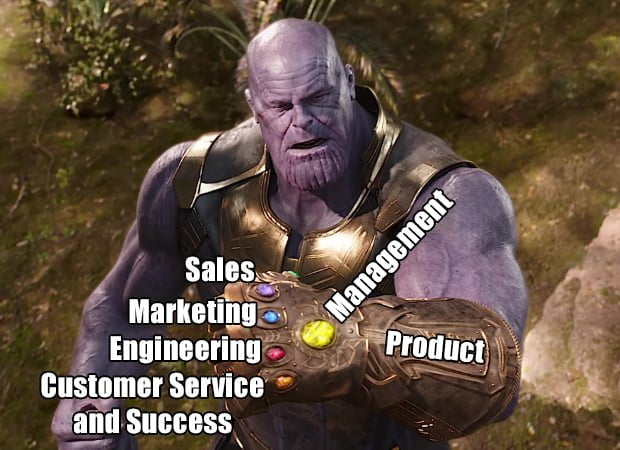
8- Design landing page accordingly
As I said, in the age of the internet and digitalization, users do their own research to get the knowledge they need. And compared to someone downloading your app to their mobile devices, people who visit your website are more likely to do so to discover and learn about your product.
In this regard, your landing page should be more focused on marketing your product. To be more clear, your landing page’s content and design should be more focused on marketing rather than explaining to users how to use your product in detail.
You should be able to come up with the questions, needs, and expectations of users in-product and through your landing page.
Here are some suggestions for your landing page:
- Do not bombard users with navigation elements and too much information.
Users would only like to see what they need on your landing page.
- Try not to interrupt users with endless pop-ups.
It is one of the leading reasons for a high bounce rate.
- Place sign-up and download buttons on a visible space on your landing page.
Users shouldn’t have to dig into your website to be able to sign-up or download.
9- Optimize content on website, blog, and product
Keeping in mind that users do research to solve their problems or come up with their needs, your goal should be to provide them with the solutions rather than viciously marketing your product through useless content.
In this regard, you should:
- Educate your content team about your product.
Your content team should understand and internalize the value of your product. They should also be as knowledgeable about the features and use cases of your product so that they can create the most attractive and engaging content.
- You should optimize your content for search intent.
Yes, SEO is cool, and you should for sure have it in mind. However, it should not be at the center of your marketing strategy. What should be at the center is the value you provide to users by keeping their search intent in mind. Traffic and getting leads are important, but your content should focus on showcasing your product in a way that is relatable to your content.
- Explain to users what value users can find in your product and how they can actually find it.
Use plain language and briefly explain to users what they look for, and if what they look for is related to your product, encourage them to try your product out. That is to say:
- Use CTAs at a relevant point to convince users that your product can solve their problems.
The key point here is using CTAs at a relevant point, such as right after explaining the solution for their problem.
- Give space to reviews.
Giving some space to reviews will have a considerable impact on user acquisition. People take other’s words into account when making decisions.
In our interview with Victor Eduoh, Founder @VEC, he suggested:
"Your messaging should be crystal clear and should resonate with your ideal customers."
Victor Eduoh
I believe this suggestion is great because it simply explains that your business shouldn’t aim for every customer that is out there. Instead, the ideal ones for your product, your content should also do the same. When creating content, you should put forward crystal clear messages that are more focused on the needs and expectations of your ideal customers, and convince them to using and paying for your product.
10- Time-to-value (deliver value as soon as possible)
- It is always good to provide instant value to users.
The shorter the time-to-value, the more often users will come back to you.
You probably know from yourself that nobody has time to spend digging into a webpage for finding value in a product. You can so easily distinguish yourself by providing users with what they need quickly.
If it is possible to provide value instantly, you shouldn’t make it hard for users to get to that point.
Here is a great example from Bitly:
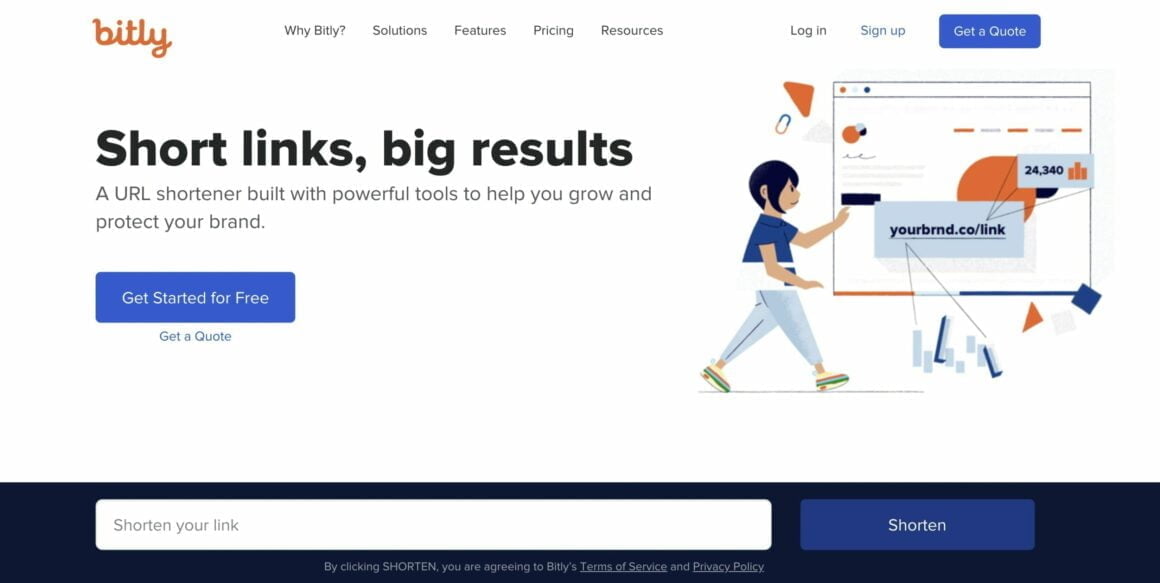
You can see that someone trying to shorten their links will find out about Bitly, simply understand what it does, and immediately find value from it on the landing page.
11- Freemium
If you have a paid product, offering a freemium experience helps customers fulfill a simple desire that has literally been out there for ages, namely the desire to trying something out and comparing it with other options before buying it.
I think this basic desire is proven by the statistic that suggests three out of four B2B buyers would rather self-educate than learn about a product by a sales representative.
You should be aware that many businesses fall into the mistake of thinking that offering freemium is enough for being product-led. You should know that freemium is only a step in product-led growth, but it is for sure an important step.
Freemium is truly a win-win relationship for a couple of reasons.
- First of all, many paid products have free options, whether pirate or not. Thanks to freemium, you also aim for users who may have the tendency to using products of bad quality because they are free.
- Secondly, you give the opportunity to help users better understand your product and how they can find value in it. So, when the time comes, users will choose your product not only because they find value in it but also because they are acquainted with your product.
- Lastly, if you provide a satisfying freemium experience, you always have the opportunity to do the upselling.
Spotify is an excellent example of providing a satisfying and attractive freemium experience that encourages upselling afterward.
Let’s take a look at it.
If you use a freemium version of Spotify, you are exposed to ads and, you are only able to skip six songs per hour.
Once you start to skip songs and get close to using all your free skips, Spotify sends you a notification like this one:

When you reach your limit for skipping songs, you are invited to upgrading your subscription to the premium version.
You are still able to use the freemium version, but you have to admit that the premium version is very tempting in such situations.
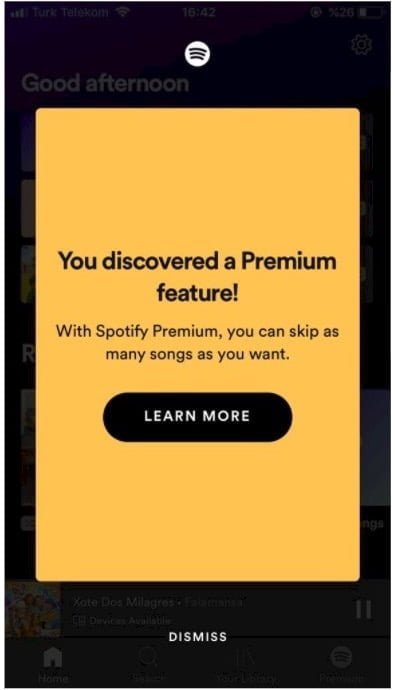
The option to dismiss will prevent users from feeling forced to switch to premium, therefore preventing frustration.
12- Provide demos
You may be wondering why this is actually a separate step from offering freemium.
Even though freemium is also a demo, a self-serve demo to be more clear, what I want to explain in this step is that you should offer demos to those prospects who need human touch to understand your product and how it can bring value to their businesses.
As mentioned above, not all of your prospects are the same. Once you start doing business with large enterprises, you will need people to explain your product and come up with answers to the concerns of large enterprises.
In such situations, when you want to sell your product to large enterprises that require cross-functional buying decisions, booking demos will help you better clear the air.
You can and should automate demos and make them self-serve for many prospects in a product-led business; however, just as I emphasized many times in the article, product-led growth is not going one way or another.
Don’t forget, you aim for growth, and if what helps you grow is making use of traditional sales methods, then you should go for it.
Onboarding
Although some of the earlier steps are very much related to onboarding, at this point, I want to further elaborate on how important onboarding is for product-led growth, and how you can achieve a successful onboarding process to become a successful product-led business.
Onboarding is often misunderstood and mistaken for a product tour. A product tour is only a step in onboarding, but onboarding is much more than that.
It begins with the user’s first interaction with your product and is an ongoing process to retain users.
13- Consider using a third party platform
Using a PLG platform is the real first step in onboarding.
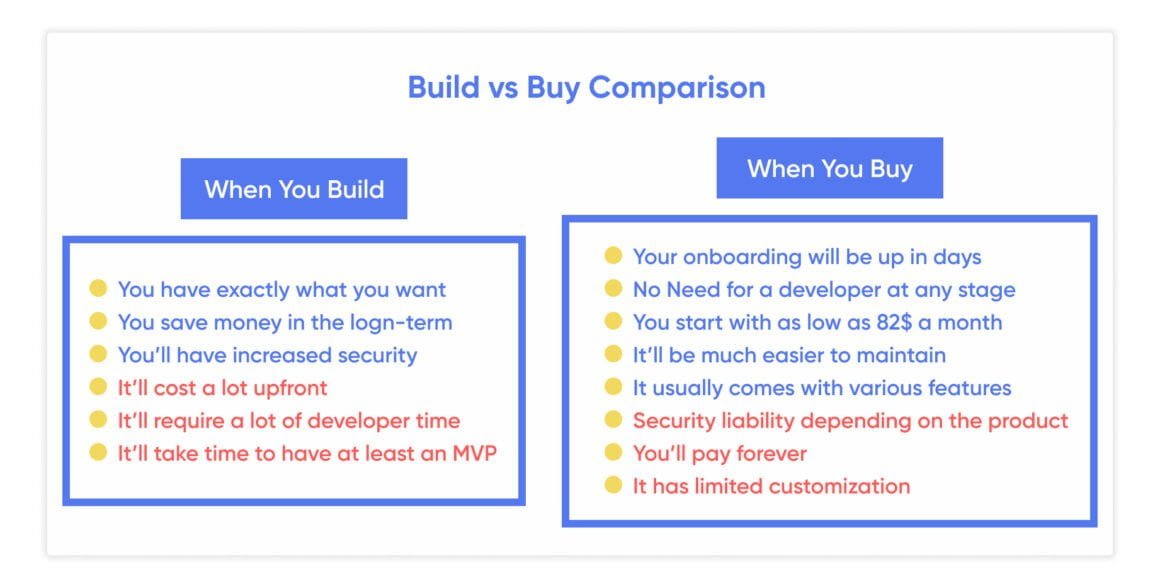
63% of customers think that user onboarding is a crucial aspect of their initial decision-making process, and 55% of users say that they have returned a product before because they didn’t know how to use it.

Automated user onboarding via a no-code user onboarding software will help you save resources and valuable time while providing you with the best abilities to offer an excellent onboarding experience.
UserGuiding helps you create:
- Product tours
- Checklists
- NPS surveys
- Hotspots
- Help centers
- Resource centers
In doing so, it allows you to:
- Use product data effectively
- Segment users
- Track goals and metrics such as DAU and NPS
- Provide a personalized process
To turn onboarding into an effective process both for your business and your users, you can start using UserGuiding!
14- The downloading and sign-up process
You should guide users through the download and sign-up process.
As I was talking about “designing landing page accordingly” on the 8th step, I suggested that you place the download and sign-up buttons in a visible place. Well, this was also a part of the onboarding process.
In order to help users successfully download and sign-up, here’s what you should do:
- Enable users to download your product with as few steps as possible.
- Give clear instructions on how to download and sign-up.
- Keep it easy and short for users to sign-up.
- Do not ask for too much information during the sign-up process. (You should only ask for what’s necessary because you always have to option to ask for further information later in the user’s journey.)
15- Onboarding emails, in-app messages, and push-notifications
Communication is vital for product-led growth. If you cannot communicate effectively with users through the onboarding process and later for anything from announcing updates to discounts, PLG will not be so much achievable for you.
Onboarding emails, in-app messages, and push notifications are all effective, but you should use them for different purposes to be even more effective.
In-app messages are among the most efficient way to communicate with users because you can send in-app messages at the most relevant point in users’ journey. However, one disadvantage is that you can only send in-app messages while users are using your app.
So, when users are not using your app, you can make use of push notifications and emails but keep in mind that emails are the most ignorable mediums.
Emails are most effective through the onboarding process because users can follow emails step by step, and if you can provide value to users via email, they will be more eager to follow your emails.
The key points here are that:
- You shouldn’t send too many emails, messages, and push notifications.
- Make users sure that they will find value in what you send them. No matter how exciting things might be for you, always ask yourself what value will the user find from your emails and messages.
- Use clear language and keep it short.
- Refrain from bombarding with pop-ups as much as possible. This doesn’t mean that you shouldn’t use them at all.
- Segment users and send personalized messages.
- Try to send these messages at the most relevant point. Do not send them randomly at any given time.
Here is a perfect in-app message example from LinkedIn:
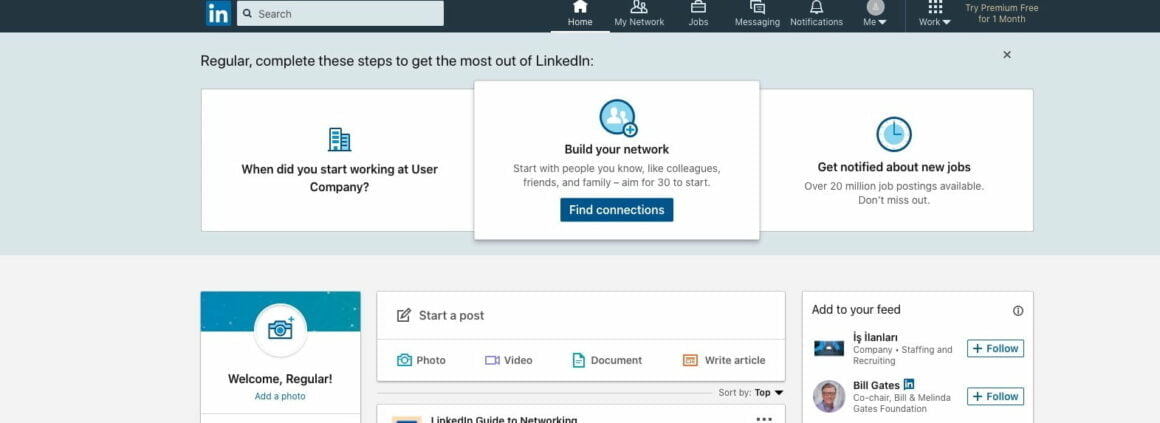
It is personalized from the beginning, and it encourages users to take “these steps to get the most out of LinkedIn.” The message is clear and straightforward, and it is put forward with only a couple of words. This way, users will be better motivated to see the value that they can find.
What I like about it the most is that it is not a pop-up that blocks anything on the page; instead, it is right at the top, and users can simply close it by clicking on the “x” button on the top right corner.
16- Product guides/walkthroughs
Two of the most effective ways to guide users through your product are interactive guides and video guides.
However, if we are talking about self-serve products and product adoption, interactive guides are the best in helping users learn how they can find value in your product. If you want to achieve PLG, interactive guides are what help your product run the show.
Interactive guides help users take action and better comprehend using your product. A well-prepared product guide will help you decrease churn drastically.
The numbers also point out this:
80% of users have deleted an app before because they couldn’t figure out how to use it.
For a perfect product tour you should:
- Begin with asking yourself what features will be the most useful to users and why users should learn about them.
- In line with asking these questions, refrain from explaining every small feature to users because it may be overwhelming.
- Personalize the tour.
- Explain the steps and features as clearly and briefly as possible.
- Provide checklists and time/progress indicators.
Here is a good example from Ajar’s product tour created with UserGuiding product tour software:

Instead of forcing the users to take an all-around product tour, Ajar provides checklists and leaves it to the users to take the steps or not. At the beginning of the tour, you can either click on the “Start” button to begin the tour, yet if you don’t like to take the tour you can still cancel the process by clicking on the “x” button.
It takes only a few seconds to complete the tour, and users can actually take action to better memorize and understand the whole process.
Instructions are clear and don't require too much effort, and this is the best part of it.
17- Onboarding checklists
Checklists will help you increase efficiency for your onboarding process, therefore, product adoption. You saw it in the example above, but I would like to explain further and show you another example to make it better for you.
A good onboarding should look like this:
- Again, as in many other steps, it provides information with as few words as possible.
- Includes each necessary step in the checklists.
- Provides time indicators to help users know how long the step should take.
- Uses a progress bar to help users learn where they are on their journey.
Here is a great onboarding checklist from ClickUp:

You can see that each step is clearly defined and put forward with a time indicator. Time indicators are crucial in helping users manage their time and journey better.
They can estimate the time they should spend on the tour and not be tired of taking the whole tour at once.
18- Help center
I said it too often that product-led is about identifying the needs, problems, and expectations of users and coming up with solutions to those via your product. In line with this idea, you need to give due consideration to creating a satisfying help center.
A satisfying help center should have:
- Knowledge bases
- FAQs
- Video tutorials
- Live support options
Like I said earlier, you may be a product-led company, but you will still need salespeople. Similarly, even though you can automate your customer support, you should still have customer support representatives to solve the problems of those customers who can’t do it themselves.
Here is a simple example from WhatsApp:
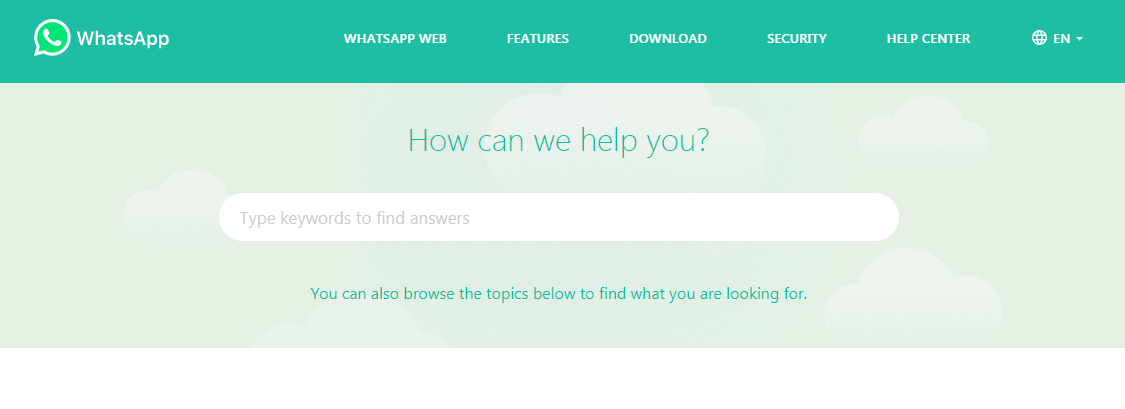
WhatsApp’s automated help center is very easy to use for those who are looking for answers to their questions.
However, this may not be enough for every product that is out there. Taking the complexity of your product and the problems that your users face, you should look for ways to enhance your help center. For example, as I suggested earlier, you should offer video tutorials and live support options.
19- Collect feedback
Collecting feedback is a win-win practice. It does not only help provide a better user experience but also helps you improve your product. Once you learn how to collect and utilize customer feedback in the best way, you will make a difference not only for your business but also for your customers.
This win-win relationship will help you create brand advocates who will promote your services and products via word of mouth.
The advantage of collecting feedback through the product is what changes the game for a product-led SaaS company.
Compared to collecting feedback via emails or other methods, collecting feedback via your product is much more effective.
When collecting feedback in-product, you should:
- Not ask for too much information. Only ask for what’s necessary and provide the option to give further feedback.
- Know when to ask for feedback. Do not interrupt the user’s journey for feedback. Instead, wait for them to finish getting work done.
- Make sure that the user realizes that you collect feedback to provide a better product and service for them.
- Not force users into giving feedback. Always give them the option to skip the request.
Let’s look at an example from Uber:
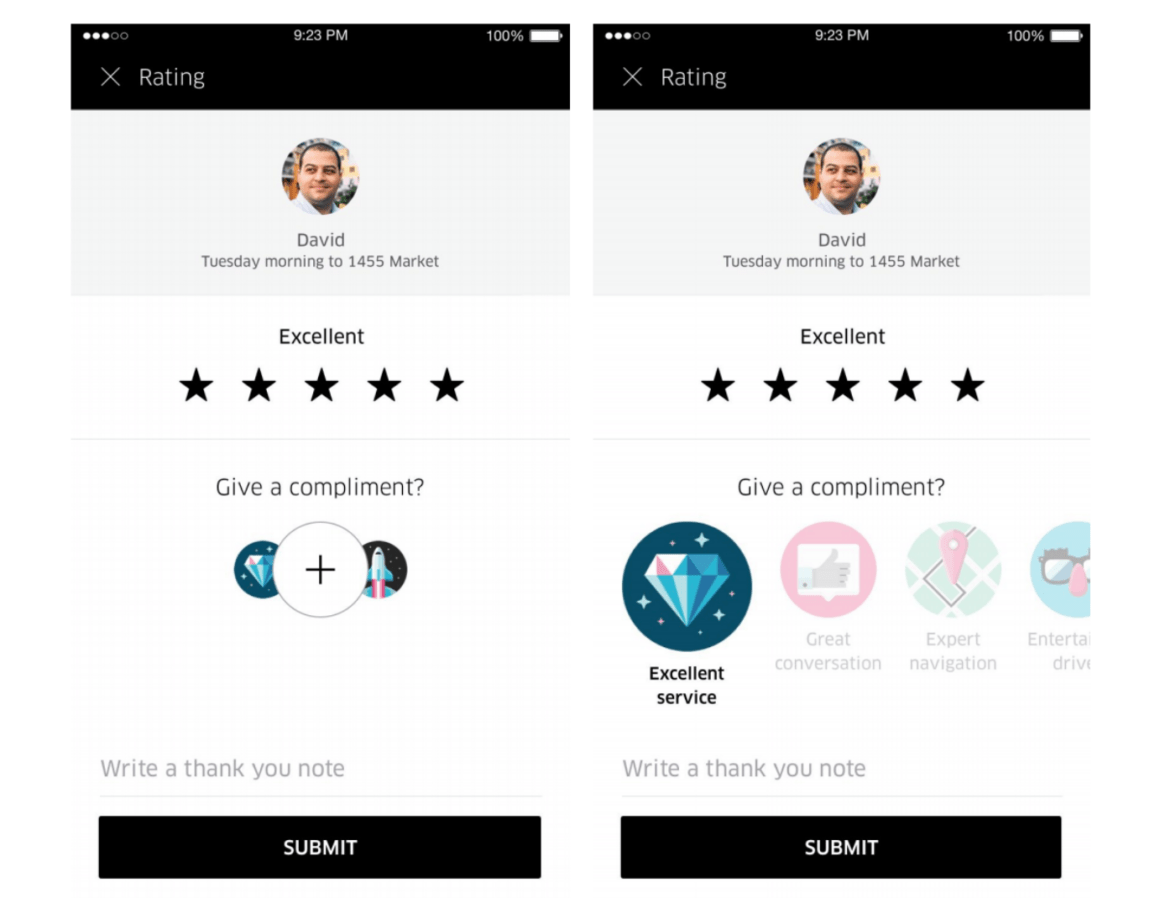
Uber nails collecting feedback not only for their users but also for drivers.
It is not only the users who give feedback but also the drivers, and this makes it much better for all parties to enjoy the app.
As you can see, it is not that hard to give feedback via the Uber app. The process is very easy for users to give feedback. Users know that their feedback will be taken seriously because Uber is all about providing a safe and satisfying experience.
As for the ultimate feedback, NPS surveys will provide you a much better insight into your users’ satisfaction with your product.
If you aim for product-led growth, then you should know how likely your users are to suggest your product to friends, family, or colleagues.
20- Personalize the whole process
You’ve read many times that I suggest you personalize many of the steps above. In the examples above, there is a reason why LinkedIn and ClickUp call the users by their name.
When you make use of the product data in a good way and personalize your processes, your users will better relate to your product and find value in it.
A personalized welcome message will make the user feel at home. Making use of the product data analysis, segmenting users, and examining user behavior, you can create a process that each user uniquely relates to and eventually turns into loyal customers.
From the beginning till the end, personalized steps will encourage users to learn more about your product and be convinced about the value they can find.
Conclusion
If you think that you have a great Saas product but somehow can’t achieve growth, there is a high chance that the product-led growth strategy will help you reach your goals. Once you decide that PLG is the strategy that you need to adopt, these twenty steps will help you overcome the challenges and give you an insight into the further challenges you might have.
You should always keep in mind that you aim for growth and PLG is not my way or the highway type of strategy. That is to say, it doesn’t mean that the practices of traditional strategies should be completely left out.
Frequently Asked Questions
What does it mean to be product-led?
Being product-led is adopting a mindset that is shaped around the needs and expectations of users and finding ways to bring solutions to those needs and expectations. When trying to do so, product-led companies reflect this approach to every other process that runs in their business. From marketing to sales, customer success, or any other team, in a product-led company the teams work in harmony to acquire, convert, and retain customers and expand through product-led marketing, sales, and customer success processes.
What is a product-led model?
A product-led model is a business strategy that puts the product at the core of a company, and the customer at the core of its product.
What companies are product-led?
Slack, Calendly, Koan, and Dropbox are some of the many companies that are product-led.

















.svg)
.svg)
.svg)
.svg)
.svg)

.svg)
.svg)












.svg)
.svg)




.png)

















